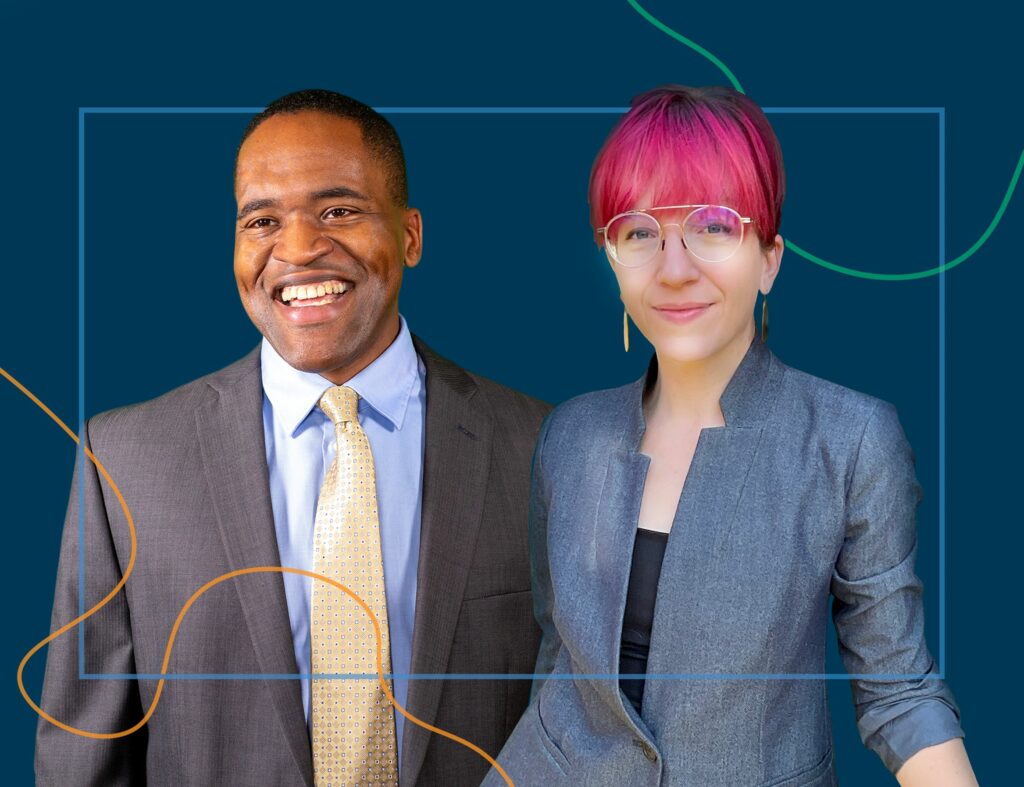Q&A: DREAM Leadership Growth
DREAM is excited to celebrate the organic growth of our leadership team as Nick Brooks AIA, NCARB transitioned to Principal and Sara Kudra AIA, LEED AP to Affordable Housing Director. As a firm that embraces diversity of thought, Nick and Sara shared some insight into their unique approaches to design, equity, and leadership in the architecture industry.

How can architecture contribute to shaping our neighborhoods and communities?
- NB: Architecture is where we live, work, and play. It also comes with an inherent permanence that means whatever decisions we make today will follow us for years. Architecture contributes to our neighborhoods and communities and can quite literally be the fabric (or canvas) that shapes our interactions as human beings.
- SK: Beauty. I think there are many components to neighborhoods that could be or are improved through design. Streetscape and scale, road width and speeds, building frequency, massing, and detailed materials and textures. A pacing which feels more humane.
How does equity play a role in design?
- NB: Equity is a critical design thinking lens that provides focus for sustainable outcomes. It has never been more clear that we are a society of differences. The best perspectives on equity provide an opportunity to view an issue or solution from a variety of viewpoints. This is a crucial component in our ability to co-exist as harmoniously as possible.
- SK: Equity in design is the availability and opportunity for every person to have access to high-quality, healthy spaces—to have access and proximity to green space and nature. To me, equity means that life and health outcomes are not limited or unduly influenced by the place that someone lives, that instead the spaces we live, learn, and work in—and travel to—are all enriching, beautiful, and invigorating environments.
In what ways is DREAM shifting the culture of the industry?
- NB: Through our collective experiences, we have learned that “telling” is not as powerful as “showing.” We are young enough to ask the question “why?” and old enough to generate a response that is well considered and informed. I would encourage anyone curious about this answer to follow DREAM as we impact the industry. One example I would like to share is our attitude towards collaboration. Internally and externally, we strive to find the people and relationships likely to create successive positive outcomes for clients, for staff, for partners, and for the industry. For DREAM, it is not enough to be profitable; we need to use the work of today to set as many positive paths possible for as many people as possible.
- SK: Our firm has gone to an hourly compensation model for all architectural and administrative staff. It was a move born out of necessity in the early days of the pandemic as an opportunity to allow staff more flexibility to take care of family and themselves. What we saw after six months of working in this model was that there was a greater awareness about the human impact of time management. While we have never been a firm to encourage extreme work hours, we were not immune to feeling deadline pressures that would have us requesting people to work overtime or weekends. Now, this has direct financial impact to the project, and managers think twice before asking or even green-lighting overtime work. I think this is a radical new model for architecture and is a very significant and meaningful step towards creating a sustainable workplace for people to thrive. When we discuss equity and bringing more diverse architects to the table, we are opening opportunities for many more life circumstances–creating opportunities for professionals for whom a traditional practice isn’t practical.
What do you hope to provide through your work?
- NB: Before I am done with architecture, I would hope to provide the framework for a new way of being. I don’t need to be around to witness it, but I will be spending my time creating opportunities to educate the industry in America regarding the value of good architects. Like Fredrick Law Olmstead, we strive to plant the small trees today to enable future generations can enjoy a park.
- SK: I want to improve the quality of our built world for the everyday person, to ensure that design is equitable and accessible. Ideally, I would help design the utopian green city for the future so that human beings can coexist on this planet with all other diversity of animal and plant life in harmony. I am searching for the right scale and density of human occupation on this planet so that we can live in symbiosis with our species and the plant, and to balance how we use finite natural resources like energy and water.